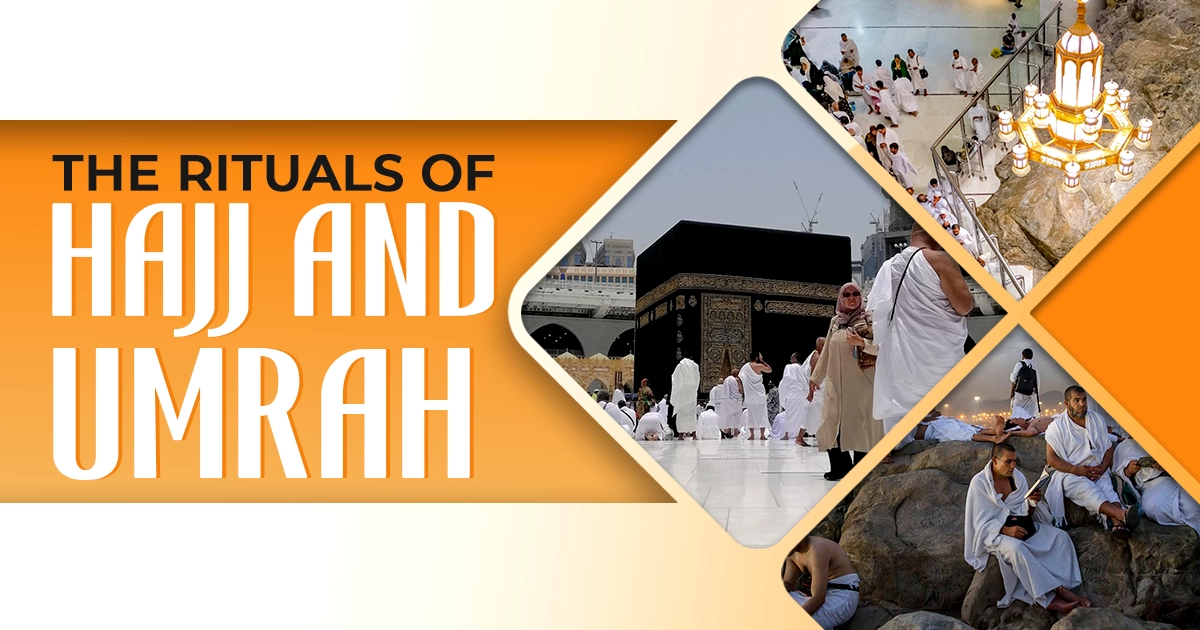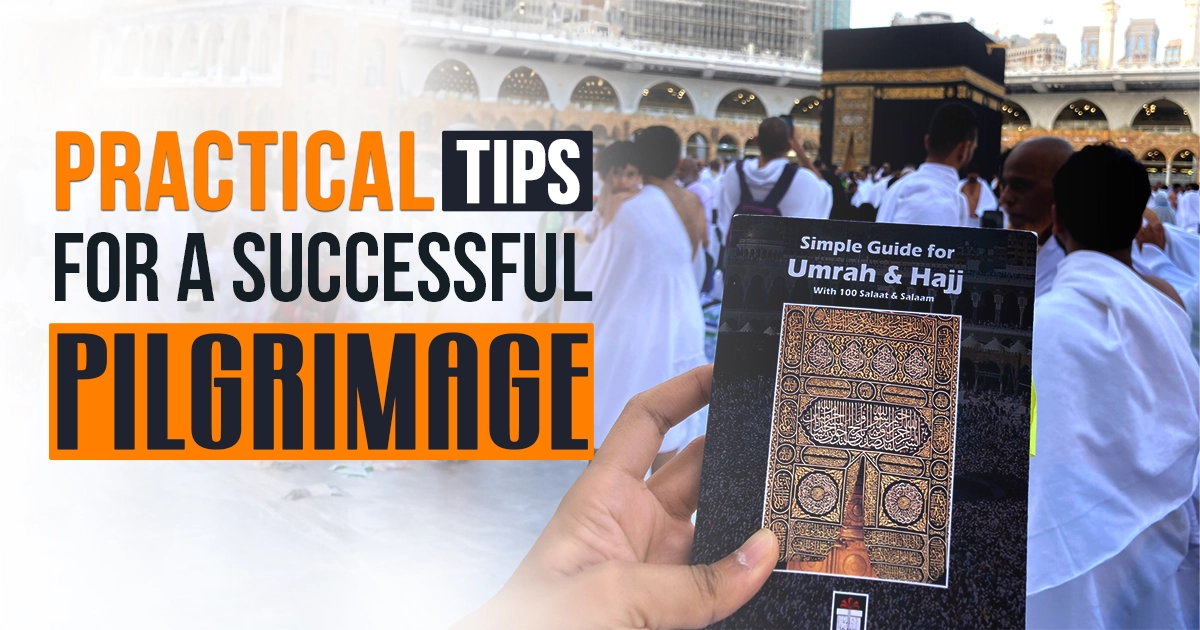Makkah and Madinah are the two holiest cities in Islam, situated in Saudi Arabia. The place holds spiritual significance for Muslims across the world. Muslims from all over the world visit the cities to perform sacred rituals of Hajj and Umrah which is an act of worship to Allah (SWT). The sacred rituals also focused on devotion, repentance, and submission to Allah. The pilgrims witness long-lasting changes that impact their hearts and souls after the sacred journey.
In this article, let’s explore the religious beauty of the sacred cities Makkah and Madinah that merged into rituals of hajj and umrah. This article helps you to get a better understanding of rituals that help you in a life-changing journey.
Table of Contents
The Beauty of Makkah

Prophet Muhammad (PBUH) was born in the sacred Makkah city. The city is regarded as the heart of all Muslims. The city is well known as Kaaba, a sacred building that is situated inside the Grand Mosque (Masjid-al-Haram). The Kaaba is the center of all Islamic rituals. It is considered the Qibla(the direction of prayer) for Muslims. Muslims around the world face Kaaba while praying Salah(Namaz) to symbolize unity in the Islamic faith. The ritual of circulation around the Kaaba is evidence of submission to Allah (SWT).
Makkah is deeply connected to the history of Islam. The story of Ibrahim (A.S) and his family, the sacrifices he made on the command of Allah, the unimaginable faith and trust of Hagar (A.S) during tough times, and the magical story of Zamzam well where Allah(SWT) created water fountain under the feet of Ismail(A.S) reminds of Allah’s rewards and forgiveness.
The city also witnessed several wonderful acts of Allah during the time of Prophet Muhammad (PBUH). The cave of Hira witnessed how Jirail(A.S) revealed the verses of the Quran to the Prophet(PBUH) on Allah’s command. Allah (SWT) saved the Prophet (PBUH) and his companion from enemies in the Cave of Thawr when they were migrating to Madinah on the command of Allah. The Prophet (PBUH) gave his last sermon to all Ummah and asked them to follow the path of Islam on the plains of Mount Arafah.
The Beauty of Madinah

Madinah is the city of the prophet. The city is encompassed with peace and serenity. It is the city where the prophet Muhammad(PBUH) built the first Muslim community after he migrated from Makkah. The city is more popular because of the existence of Masjid-an-Nabawi. The green dome in the mosques marks the resting place of the Prophet symbolizing hope and a place of worship for Muslims.
The beauty of Madinah creates a calm and welcoming ambiance for all. The pilgrims get a peaceful environment away from the chaotic life and experience profound spirituality and immense faith in Allah (SWT).
Understanding Of Hajj and Umrah

Hajj and Umrah are two different forms of pilgrimage but are interconnected and are significant in the Islamic faith. Hajj is among the Five Pillars of Islam. It is made compulsory pilgrimage for every Muslim who can afford it and are physically fit. Hajj pilgrimage takes place annually in the Islamic month of Dhul-Hijjah and includes a series of rituals to pay respect to the legacy of Ibrahim (A.S) and his family.
Whereas Umrah is a lesser pilgrimage that can be performed at any time throughout the year. It is not compulsory but still, Umrah is regarded as a highly valuable spiritual pilgrimage where Muslims seek the forgiveness and mercy of Allah.
Both Hajj and Umrah are ways of worship that are performed to purify the soul, cleanse the sins, and draw closer relationships with Allah. The rituals associated with these pilgrimages are incorporated with deep symbolizations and reminders of the sacrifices done by the Prophets in the past.
Preparing for the Pilgrimage

- Spiritual Preparation: before undertaking the hajj and Umrah pilgrimage, it is important to purify the intentions. Indulge in Duas(Prayers), perform salah(Namaz), and recite the Quran.
- Physical Preparation: The Hajj pilgrimage is challenging as it requires regular physical activity, such as walking, and can enhance the durability of the rituals involved. It is important to maintain good health.
- Logistical Preparation: Prepare travel documents, vaccinations, and other necessary documents that are required while traveling.
- Mental Preparation: Keep yourself prepared for the challenge you might face during the pilgrimage. During the peak season, the pilgrimage sites often witness uncontrollable crowds. Try to keep patience and maintain a positive attitude in the entire process.
The Rituals of Hajj and Umrah

Hajj and Umrah consist of a series of rituals that need to be performed. The basic rituals are the same for both the pilgrimage.
For Umrah, the rituals are:
- Ihram: Entering in a state of Ihram wearing two pieces of white unstitched clothes around the body for men and women dressing modestly without covering the face and then making an intention of performing sacred pilgrimage.
- Tawaf: On reaching the Makkah, the pilgrims went to the Kaaba to perform Tawaf, the seven circles around the Kaaba, praying for mercy and blessing which symbolize unity and submission to Allah.
- Sa’i: After completing the Tawaf, pilgrimage, walk or jog between the hills of Safa and Marwa to remember the struggle of Hagar (A.S) and her immense faith and belief in Allah’s decision during the tough time.
- Halq or Taqsir: The act of shaving or trimming the head after the completion of Rituals.
Along with ihram, Tawaf, and Sa’i the Hajj pilgrims perform more challenging rituals for which they travel to different sites around the Makkah city. The extra Hajj rituals that pilgrims perform are:
- Standing on Arafah: The most challenging and important ritual is when the pilgrims stand on the plains of Mount Arafah and spend the whole day praying and reciting. This symbolizes the height of the pilgrimage and a reminder of the Day of Judgement.
- Muzdalifah: After completing their rituals in Arafah, the pilgrims travel to Muzdalifah to collect stones for stoning the evils.
- Stoning of Devils: The pilgrims in Mina, throw stones aimed at the three pillars that are believed to be the devil who tried to divert the mind of Ibrahim(A.S), his wife Hagar(A.S), and his son Ismail(A.S).
- Sacrifice: The next day, pilgrims gave Qurbani(Sacrifice) of animals, be it a cow, goat, or lamb, symbolizing Ibrahim’s (A.S) willingness to sacrifice his son Ismail(A.S) on Allah’s command.
- Tawaf al-Ifadah: Pilgrims then return to Makkah to perform Tawaf al-Ifadah which is the main ritual that needs to be performed to complete the Hajj.
- Halq or Taqsir: Just like Umrah, in Hajj also pilgrims shave or trim their head, signifying the completion of Hajj.
- Tawaf-e-Alvida: The final tawaf, pilgrims perform before bidding to the sacred city.
Practical Tips for a Successful Pilgrimage

- Stay Hydrated: The weather in Makkah is unpredictable, so it is advisable to stay hydrated during the journey.
- Follow the laws and rules: Follow the guide and rules that your Hajj and Umrah service provide, and try to respect local customs and laws.
- Keep Patience: It is advisable to keep patience during the challenging situation to get a successful journey.
- Stay connected: Keep yourself connected with your group and family members in crowded areas.
- Focus on spirituality: Spend your most of the time engaging in an act of worship, repentance, asking mercy and rewards from Allah.
Conclusion
Hajj and Umrah are the pilgrimage that every Muslim dreams of taking. The Muslims all over the world desire to visit the holy city of Islam to get closer to Allah. The pilgrims hope to indulge in immense worship and ask for Allah’s blessing and forgiveness. The pilgrims repent for their sins, ask Allah to guide them on the right path and develop immense faith and belief in Allah.
 Kolkata, West Bengal
Kolkata, West Bengal


Leave a Reply